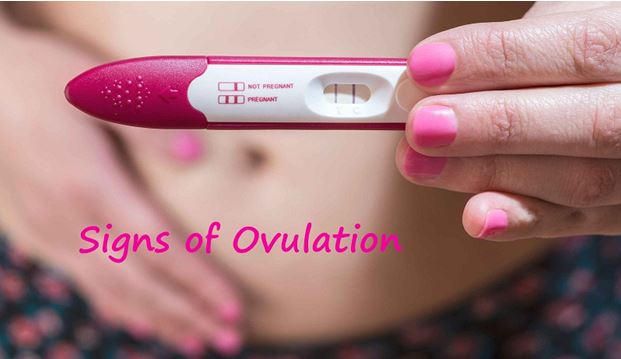Ovulation in brief
Understanding the process of ovulation is important when you are planning to get pregnant. Evolution is the process which takes place when the egg is discharged from ovaries. At the time of every menstrual cycle, the functioning of reproductive hormones starts in order to motivate the ovaries. Some immature eggs (oocytes) start growing and responding to the reproductive hormones.
Although many images your sales will show development at the starting of the cycle only e one egg is discharged. During this time period, everyone gets ready to release the egg whereas the uterine lining is all set to experience if fertilized egg. Hormones are responsible for thickening and transforming of the uterine lining.
People generally think that the eggs in the ovary start showing development from stage 1 to ovulation within a month, this is usually not true. Immature eggs take several months to develop. There are several stages they have to cross before they are completely ready for revolution. On the other hand, they can also discontinue growing and become dormant.

Symptoms of ovulation
Testing on an Ovulation Predictor Test
You can easily buy an ovulation predictor kit which is very much similar to the pregnancy kit. Just collect your urine into a small container and then place it on the tester which is available with the kit. You will see two lines. If the tester line becomes dark in color, you are ready for ovulation. This is the perfect time to plan for pregnancy.
Fertile Cervical Mucus
If you are near to your ovulation period, you will start observing increased secretion near your cervix area called cervical mucus. Cervical mucus is of a supreme quality which helps up the sperm to swim and enter into the uterus. Consequently, you will notice simpler and more enjoyable intercourse.
Enhanced Sexual Desire
Nature also plays its part perfectly. Nature knows the exact and ideal time when you can have sex and conception can take place. This can be observed by a woman’s behavior. She starts showing more interest and desire for having sex former to ovulation. Also, she starts looking sexier naturally. There is also a change in the face structure of the woman as it becomes more appealing.
Fertile Position of cervical
If your vagina is a tunnel then the endpoint of the tunnel is your cervix. Your cervix keeps on changing and shifting its position when you have your menstruation cycle. These changes can be easily tracked. For say, before ovulation your cervix will move to a higher position, the touch will be softer and the mouth will be slightly open. The opposite is the case after ovulation.
Egg Fertilization time and process
If you are planning to conceive and you are ready to get a baby, it is important to understand the fertility process in a woman’s body and its working. The true fact is that ovulation takes place only for a period of one day but according to science, a woman is more fertile for 5 to 6 days in a month.
At the time of ovulation, the egg is discharged from left or right ovary. From that point, it straight away travels downward to the fallopian tubes before reaching the uterus. One stuff egg is released it can be fertilized only for 30 hours. But on the other hand, the survival of sperm in a woman’s body can be up to 5 days. this increases the chances of a woman getting pregnant if she had an unprotected intercourse within a week time before the ovulation period.
Fortunately, if fertilization is seen, the embryo goes straight away into the uterus and is implanted into the uterine lining by itself. At this place, the embryo keeps on developing and became the reminder of a woman that she is finally pregnant now.
What is the tenure of Implantation?
Once the fertilization process has taken place, there is a continuous change in the structure of the embryo that time it finally reaches the fallopian tube where it ended its journey. The embryo takes approximately three days to finally reach to its destination which is the uterus.
Once the embryo is in the uterus it does not mean the implantation starts at that very point. according to research and studies, it has been found out that implantation can take 3 to 12 days after the ovulation. Also, people generally do not observe implantation’s symptoms.
Implantation Bleeding is normal or not
When a man and woman are finally ready for the baby to come and the mother is ready to conceive, bleeding of any type can distress them. Therefore, it is important to understand whether implantation bleeding is normal or it is a matter of concern.
An implantation bleeding can be noticed generally after 2 weeks of
conception or it can also be due to the absence of periods during the initial
time. The implantation blood can be red or brown in color. But make sure that
it is only a mild spot and nothing more than that. Some women can experience
this bleeding only for 2-3 hours while some can notice it for some days.
There are several women who are even not able to distinguish between implantation
bleeding and their normal premenstrual bleeding. Because of implantation
bleeding it is sometimes difficult to know whether the woman is pregnant oh she
has experienced in a normal period cycle until your pregnancy test confirms
that you are pregnant. Also, it is always important to understand the
difference between IVF cycle and mensuration cycle because
ovulation never takes place in the IVF cycle.
Unfortunately, if you are bleeding for more than the above mentioned days then it can be an early miscarriage and you need to go to your doctor for assuring yourself. This is very crucial as well as an important time for you so so never skip meeting your doctor and telling him what all you are going through.







